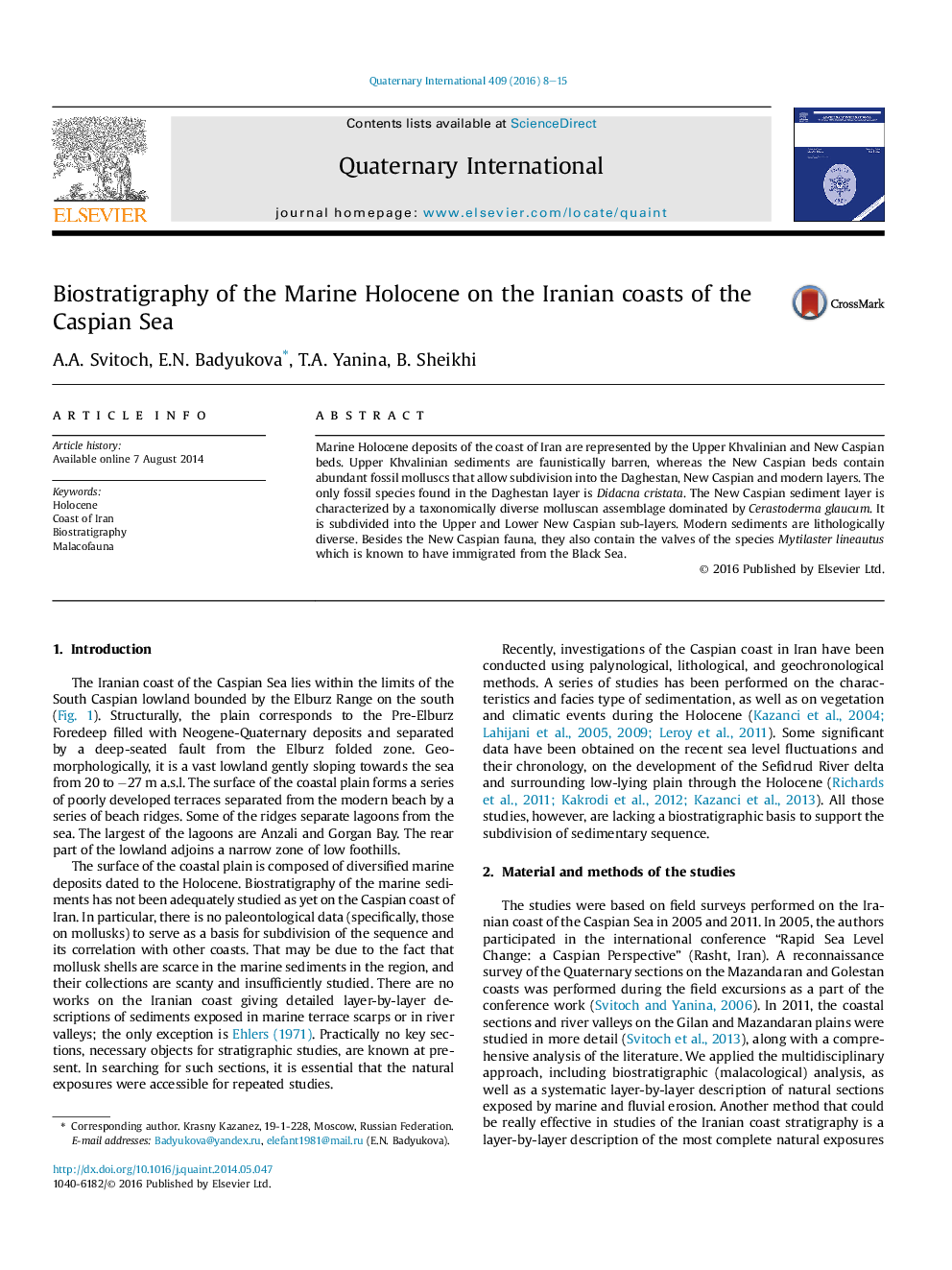| Article ID | Journal | Published Year | Pages | File Type |
|---|---|---|---|---|
| 1039981 | Quaternary International | 2016 | 8 Pages |
Marine Holocene deposits of the coast of Iran are represented by the Upper Khvalinian and New Caspian beds. Upper Khvalinian sediments are faunistically barren, whereas the New Caspian beds contain abundant fossil molluscs that allow subdivision into the Daghestan, New Caspian and modern layers. The only fossil species found in the Daghestan layer is Didacna cristata. The New Caspian sediment layer is characterized by a taxonomically diverse molluscan assemblage dominated by Cerastoderma glaucum. It is subdivided into the Upper and Lower New Caspian sub-layers. Modern sediments are lithologically diverse. Besides the New Caspian fauna, they also contain the valves of the species Mytilaster lineautus which is known to have immigrated from the Black Sea.
